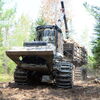Processing Your Payment
Please do not leave this page until complete. This can take a few moments.
- News
-
Editions
-
- Lists
-
Viewpoints
-
Our Events
-
Event Info
- Women's Leadership Forum 2025
- On the Road with Mainebiz in Bethel
- Health Care Forum 2025
- On The Road with Mainebiz in Greenville
- On The Road with Mainebiz in Waterville
- Small Business Forum 2025
- Outstanding Women in Business Reception 2025
- On The Road with Mainebiz in Bath
- 60 Ideas in 60 Minutes Portland 2025
- 40 Under 40 Awards Reception 2025
- On The Road with Mainebiz in Lewiston / Auburn
- 60 Ideas in 60 Minutes Bangor 2025
Award Honorees
- 2025 Business Leaders of the Year
- 2024 Women to Watch Honorees
- 2024 Business Leaders of the Year
- 2023 NextUp: 40 Under 40 Honorees
- 2023 Women to Watch Honorees
- 2023 Business Leaders of the Year
- 2022 NextUp: 40 Under 40 Honorees
- 2022 Women to Watch Honorees
- 2022 Business Leaders of the Year
-
-
Calendar
-
Biz Marketplace
- News
- Editions
- Lists
- Viewpoints
-
Our Events
Event Info
- View all Events
- Women's Leadership Forum 2025
- On the Road with Mainebiz in Bethel
- Health Care Forum 2025
- On The Road with Mainebiz in Greenville
- On The Road with Mainebiz in Waterville
- + More
Award Honorees
- 2025 Business Leaders of the Year
- 2024 Women to Watch Honorees
- 2024 Business Leaders of the Year
- 2023 NextUp: 40 Under 40 Honorees
- 2023 Women to Watch Honorees
- 2023 Business Leaders of the Year
- + More
- 2022 NextUp: 40 Under 40 Honorees
- 2022 Women to Watch Honorees
- 2022 Business Leaders of the Year
- Nomination Forms
- Calendar
- Biz Marketplace
With its paper mill long gone, Millinocket has a new story to tell
 Photo / Maureen Milliken
Great Northern Paper Co. closed its paper mill in September 2008, setting in motion 10 years of change in Millinocket (though some of the manufacturing equipment is still there). Now a new future is being mapped out by the people who've taken on the real work of rebuilding the former mill town's economy from the ground up.
Photo / Maureen Milliken
Great Northern Paper Co. closed its paper mill in September 2008, setting in motion 10 years of change in Millinocket (though some of the manufacturing equipment is still there). Now a new future is being mapped out by the people who've taken on the real work of rebuilding the former mill town's economy from the ground up.
 Photo / Maureen Milliken
A decade after the closure of the Great Northern Paper Co. mill, Millinocket's future is being mapped out: Lucy Van Hook, Steve Sanders and Dave DeWitt of Our Katahdin.
Photo / Maureen Milliken
A decade after the closure of the Great Northern Paper Co. mill, Millinocket's future is being mapped out: Lucy Van Hook, Steve Sanders and Dave DeWitt of Our Katahdin.
 Photo / Maureen Milliken
Katahdin Avenue, which leads to the mill gate, was one of Millinocket's first streets.
Photo / Maureen Milliken
Katahdin Avenue, which leads to the mill gate, was one of Millinocket's first streets.
Shack Hill has been empty since Great Northern Paper moved its residents off the mill land a century ago.
On a recent day, a CAT tractor sat on the new gravel road on the forested hill — a small sign of big things happening both on the 1,400-acre mill site and in Millinocket.
In the 1980s, Great Northern planned to put a new mill on top of Shack Hill. The plan died when Georgia Pacific acquired the company in 1989, kicking off a slide that ended when the mill closed for good in September 2008.
Great Northern had built its mill on the West Branch of the Penobscot River more than a century ago, then built a town around it. The story of town's decline — loss of population, homes, businesses — was so stark it even made the New York Times.
Now Millinocket has a new story to tell. “Ten years ago, we were the poster town for what happens when your mill closes,” says Jessica Masse, who owns Designlab on Penobscot Avenue with her husband, John Hafford. “Now we're the poster town for what you can do about it.”
At the heart of the story is the mill site, now an industrial park, renamed One Katahdin.
“All the infrastructure is going up here,” says Steve Sanders, director of mill site development for owners Our Katahdin, as he sits in his pickup truck on the top of Shack Hill. “It's great for development. There are a lot of good things about this land.”
The first big news for the site came in February, when LignaTerraCLT Maine announced it will build a 300,000-square-foot cross laminated timber production plant there. The company projects 100 jobs in the next five years.
At press time, One Katahdin was waiting for word on a $6 million Economic Development Authority grant that would help pay for the infrastructure.
While the focus for the site is wood fiber businesses, other businesses are welcome. A data center is planned, aquaculture is possible and “a whole slew of other things” have been proposed, Sanders says. “We've probably talked to 50 companies.”
Lucy Van Hook, Our Katahdin community development director, says sustaining economic growth through having many businesses is the goal. “Previously, one company owned the mill site, they built the mill and everyone worked there,” she says.
Sanders, a lifelong town resident, says, “We know what happens when you put your eggs in one basket.”
'The road ahead will not be easy'
In 2011, New Hampshire-based Cate Street Capital bought the mill, as well as the one in East Millinocket. Promises to develop the site never materialized.
By the time Cate razed the smokestacks, the town was close to rock bottom.
An August 2014 New York Times article read like an obituary: “In some ways, the town seems as if it has frozen, with little economic growth to replace what was lost.”
Urban planning consultant Charles Buki, of CZB LLC in Alexandria, Va., was moved by the article, and his firm did a pro-bono analysis. The result was a tough blow.
“The road ahead will not be easy,” Buki wrote in an open letter to the town in January 2015, published in Down East magazine that March. He said improvement meant “fundamental change,” including not focusing on things like the tax rate, but on what work was being done in the community and why.
“You have to dig deeper than you have become accustomed to, and you have to start polishing Millinocket — its streets and sidewalks and homes and riverfront — on your own nickel. You have to improve your attitude towards the outside world.”
While some felt scolded, others in town were already getting started.
In December 2014, Our Katahdin was formed as a nonprofit that promotes “small wins.”
The first project, led by residents Dave and Nancy DeWitt, was a crowdfunded renovation of the dilapidated downtown bandstand built by Great Northern a century before. The Christmas tree lighting at the bandstand that year has come to symbolize the town's resurgence.
Dave DeWitt, who spent 41 years at the mill, says there were people in town who knew even then what it would take to move forward.
“Looking at things in a new way is what's going to make the town change,” he remembers telling his son Sean, a founder and president of Our Katahdin. “There ain't going to be any more paper-making.”
Efforts have included those little wins, not only in Millinocket, but in nearby Medway and in East Millinocket, whose mill closed in 2014.
They also include big things, like Our Katahdin buying the mill site for $1 in January 2017, taking on its $1.4 million IRS bill and another $160,000 owed to the town.
Not just about the mill
“One of the things we're doing is providing a platform for community involvement,” Van Hook, of Our Katahdin, says. The goal is to make the region “a nice fertile space,” including a move to bring high-speed internet to the three towns.
One of the biggest wins is the library, which closed for three months in 2015 when the town ran out of money to operate it. It reopened after an emergency $30,000 fundraising campaign.
The library is now gearing up for a $1.5 million renovation, sparked by a $500,000 Next Generation Foundation grant.
The library has also opened Gearhub downtown, which lends its 29 mountain bikes to anyone with a library card, and has workshops, training and information on where to bike.
Library Director Matt DeLaney says the program is a way for the library to be part of downtown's growth while also enriching the community. While it may seem an odd function for a library, it fits, he says.
“When communities fall on hard times, that's when libraries become most important,” he says. “It's the mission of a library to enrich lives, empower, inspire and build the community.”
A new attitude, identity
Much of the focus is on attracting young people who will help grow and sustain the economy.
Our Katahdin's Van Hook is one of those transplants. She moved to town in 2015.
“There definitely was a sense of despair,” she says. Soon, though, she noticed, “There were new conversations happening. There were these cracks of light.”
DeLaney and his wife, Emily, lived in upstate New York, and he was looking for a library director job in an area with a slow pace and outdoors opportunities, but where he could also make a difference.
“When we saw Millinocket, there was no question,” he says. They fell in love with the area's beauty, but he also liked the challenge.
“I'd never been to a place where its identity seemed so clear, then it's shattered,” he says. Millinocket had a new story to tell and he could be part of it.
The resurgence, though, is largely on the shoulders of those already in town.
On a recent day, Sanders, DeWitt and Paul Carney, who is in charge of maintaining the mill site, contemplate the massive Paper Machine 11 building.
Built in 1971, it's one of the few structures left — 140,000 square feet of steel and concrete. One Katahdin is hoping to find a new user.
As the men discussed the years since the mill closed, they say the biggest change they see is attitude.
“You don't hear the negative talk,” DeWitt says. “People are opening businesses, things are going to happen, and people are seeing that.”
“There was a desire to come back in some way,” Sanders says. “There's an unbelievable connection for people who grew up in this place. People were willing, they just needed to be shown it could be done.”
Read more
Redevelopment of shuttered Millinocket mill gets $5.3M boost
Millinocket timeline
1898: Preliminary work by surveyors begins in Indian Township No.3 for the Great Northern Paper Co. mill.
1899: GNP Co. forms and construction on the mill begins, with a crew of 1,000 by August.
1900: The town's population reaches 2,000 and on Nov. 9, the first newsprint is made on No. 7 paper machine.
March 16, 1901: The Legislature enacts the charter for the town of Millinocket.
1911: Millinocket's population hits 5,000.
1936–37: Great Northern Paper Company is the largest newsprint mill in the world.
1970: Census reports Millinocket's population has reached 7,672.
1973: The average annual gross manufacturing wage in Millinocket is $11,951, roughly $64,000 in today's dollars, compared to a state average of $7,050 (about $38,000 in today's dollars).
1989: Great Northern Paper is taken over by Georgia Pacific.
1999: Canadian company Inexcon acquires the company.
Jan. 9, 2003: Great Northern Paper files for bankruptcy. Brookfield Asset Management acquires the company.
2008: The company lays off workers, then closes in September.
2010: The town's population is 4,466, according to the U.S. Census; it is projected to be 2,300 by 2020.
2011: Cate Street Capital buys the mill, eventually razing buildings and auctioning off machinery to pay back taxes.
2013: The town puts more than 60 tax-acquired homes on the market for bargain prices in an attempt to recoup tax revenue.
February 2014: East Millinocket mill closes for good.
August 2014: The iconic smokestacks and major buildings on the mill site come down; The New York Times publishes an article that says, “In some ways, the town seems as if it has frozen, with little economic growth to replace what was lost. It is hobbled by the isolation that was necessary to its founding.”
March 2014: The town seeks to raze at least 12 homes it couldn't sell.
October, 2014: Urban planning consultant Charles Buki, of CZB LLC, Alexandria, Va., visits for a pro-bono assessment after reading the New York Times article.
December 2014: Our Katahdin forms, a non-profit community-driven group that stresses “small wins” and crowdfunding; its first project is renovation of the Millinocket downtown bandstand in time for a Christmas lighting.
January 2015: Buki writes an open letter, published in Downeast magazine, telling Millinocket “the days of good jobs with little education are over” and that the town has to “invest in yourselves, because if you don't, no one else will, nor should they.”
July-September 2015: The library closes for three months because of lack of funding; it reopens after a fundraising effort and an agreement to be run by the Friends of the Millinocket Memorial Library.
August 2015: Katahdin Revitalization, a volunteer group focused on boosting the economy of Millinocket, East Millinocket and Medway, forms.
December 2015: 52 runners take part in the first Millinocket Marathon, organized by Gary Allen of Mount Desert Island; in lieu of a registration fee, runners are asked to spend money in the Katahdin region.
2016: The town's population is estimated to be 4,299
December 2016: The Millinocket Marathon draws 552 runners and is the topic of a Runner's World article.
Jan. 12, 2017: Nonprofit Our Katahdin buys the 1,400-acre mill site and other former mill property for $1, taking on a $1.4 million federal tax bill and $160,000 in back real estate taxes owed to the town.
September 2017: Library gets $500,000 grant from Next Generation Foundation to help with $1.5 million renovation project.
October 2017: Northern Forest Center announces plans to buy, renovate and rent out 10 houses in the downtown area as a workforce housing initiative.
December 2017: Some 1,856 runners register for the third Millinocket marathon; about 1,000 former GNP workers in Millinocket and East Millinocket are paid a small portion of vacation, severance and pensions they earned at the two mills.
February 2018: LignaCLT Maine, which aspires to be the state's first cross laminated timber producer, announces plans for a 100-job production plant at the mill site.
June 18, 2018: Great Northern Paper Co.'s bankruptcy case ends with $203 million in assets abandoned; $15.5 million distributed to claimants; $302.8 million discharged without payment.
Sources: Millinocket Historical Society; Bangor Daily News; Our Katahdin; Mainebiz
Millinocket's road to recovery
In an open letter to Millinocket in January 2015, urban planning consultant Charles Buki challenged the town to find new innovative ways to build its economy. Some of that is covered in this edition's article about the town's turnaround since the Great Northern Paper Co. mill closed in September 2008. Revitalization efforts include:
• Housing: The Northern Forest Center buys distressed downtown houses, fixes them up and rents them out to provide workforce housing for the town's largest employer, Millinocket Regional Hospital, and other businesses.
• Downtown development: Nonprofit Our Katahdin in 2016 bought 230 Penobscot Ave., which was once Miller's, the town's biggest department store. A brownfields grant has cleaned up the two-story building and plans are for coworking space and more.
• Outdoors tourism: The Millinocket Marathon, started by Gary Allen of Mount Desert Island in December 2015, was designed to bring attention to the town as well as help boost its economy. It's grown from 52 runners its first year to more than 1,800.
• Broadband: A regional broadband initiative received a ConnectME Community Planning grant and Our Katahdin hired Axiom Technologies to create the plan.
• Collaboration: Katahdin Revitalization, a volunteer effort, works to enhance and provide direct services to build community, promote cultural and community assets, encourage economic development and improve the overall quality of life throughout the Katahdin Region.
Mainebiz web partners
One way I think will get more money for Millinocket is to take some of these closed buildings and make something for kids Millinocket doesn't have really anything for kids and a community center or fun place I think would attract more people to at least come and visit the town and might even get people to come and live here.










1 Comments